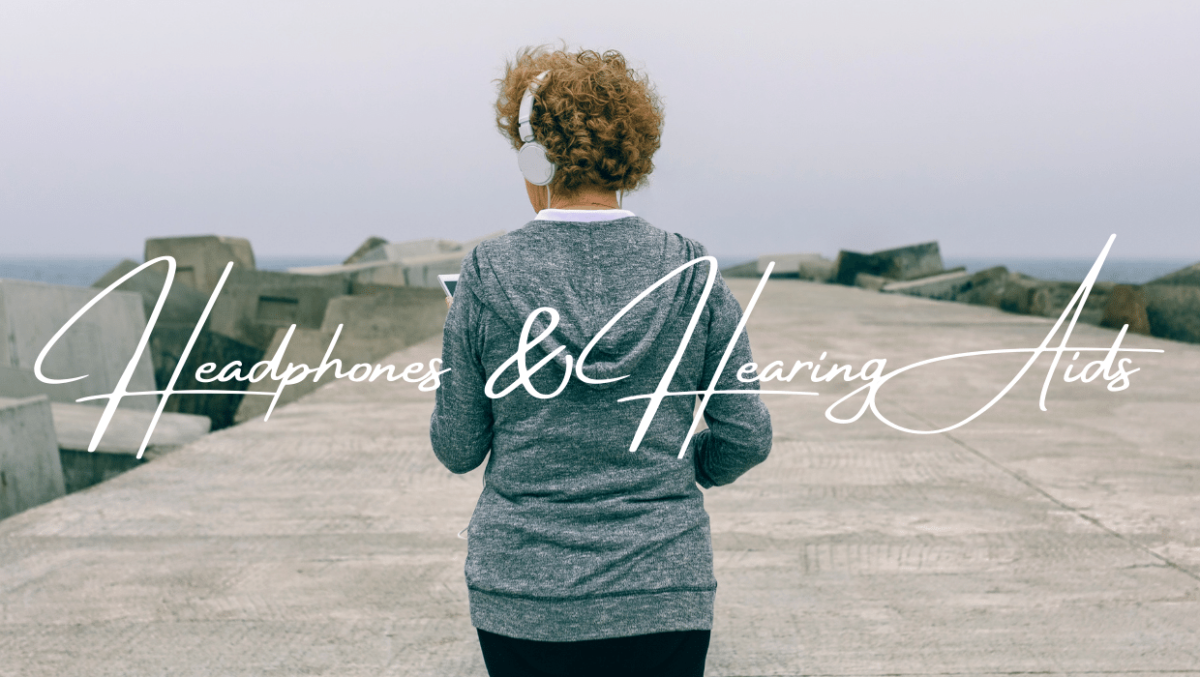It used to be that if you were a hearing aid user it was difficult to use any kind of headphones. Often the hearing aids of the past were too bulky to fit beneath headphones or that the combination of the two technologies created annoying and distracting feedback.
Today, headphones are part of our lives more than ever before, allowing us to speak on the phone hands free or listen to our favorite music or podcasts in public without inconveniencing others around us. As hearing aid technology continues to advance there are now a number of options, which allow us to use headphones with hearing aids rather effortlessly.
The Dangers of Headphones
While headphones make our lives easier and often more enjoyable in a busy and sometimes crowded world, it is important to always practice hearing safety when using headphones or earbuds.
Noise induced hearing loss is a serious risk to the hearing of people of all ages and headphones are one of the most common causes of this type of damage. It is important to make sure you never turn your headphones up past 60% of available volume and make sure to give your ears a break at least every hour.
With headphones finding a safe volume can be difficult because there are often two volumes to consider: that of the sounds in your headphones and that of your hearing aids. It is important that both devices are at a safe listening level to avoid further hearing damage.
Finding the best headphones for your particular hearing aids
Today there are many styles and types of hearing aids with more and more technological options available to enhance our hearing experience. Some hearing aids interface with your smartphone, allowing you to modify the sound quality of your hearing aids from your device. This can also allow you to stream audio information directly from your smartphone to your hearing aids making your headphones and hearing aids one.
Other hearing aids are now small enough that earmuff style headphones can fit over your entire ear. It all depends on your hearing ability and what style of hearing aids and features will work best for you. Our team can go over the different models of hearing aids and headphones available and help you find your best option.
In-The-Ear (ITE) Hearing Aids
When your hearing aids fit in your ear canal it is much easier to find a good fitting pair of headphones. ITE hearing aid fit in the ear canal, often making it hard to see the actual hearing aid at all. Usually suggested for people with mild or moderate hearing loss these hearing aids are often so small that it is hard for those with dexterity issues to navigate these devices, however for headphone use ITE are versatile. Headphones that fit over the ear or on the ear work with these types of hearing aids as well as earbuds in some instances.
Behind-The-Ear (BTE) Hearing Aids
This model of hearing aid is more complicated to find compatible headphones but definitely possible. BTE hearing aids are often suggested for people with moderate to severe hearing loss and range in size. Some BTE use an ear mold and very thin tubing while those with less severe hearing loss can use receivers in the ear models, which have a speaker built into the ear tip instead of the main part of the hearing aid.
Headphones that fit over the entire ear are best for this model. When it doesn’t fit completely over with a tight seal, the hearing aid will pick up external sound interfering with the sounds from the headphones. An ideal fit that is compatible with BTE is contingent on the headphone speaker and its proximity to the hearing aid microphone. If the speaker is too close it can cause buzzing and feedback
We’re Here to Help!
The good news is that you don’t need to figure out which headphones or earbuds will work best for you with your hearing aids. Our team can help you explore your options for your particular hearing aids. Contact us today!

